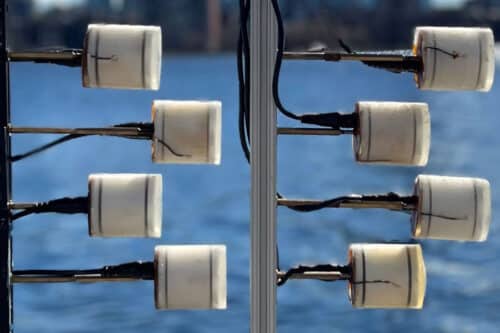The system holds the potential to facilitate battery-free underwater communication over kilometre-scale distances, assisting in climate and coastal change monitoring.

MIT researchers have demonstrated the first system for ultra-low-power underwater networking and communication, which can transmit signals across kilometre-scale distances. It can transmit signals over several kilometres using a fraction of the power that existing methods demand. This innovation, which began years ago, stands to revolutionise sectors like aquaculture, hurricane prediction, and climate change modelling.
Despite initial testing limitations, the technology exhibited significant potential, vastly outperforming previous methods with over 15 times the communication range. Utilising underwater backscatter that encodes data in sound waves it promises more efficient and long-range communication. An analytical model, corroborated by experimental data, showcases the system’s capability for kilometre-scale communications, heralding a promising trajectory towards practical deployment.
Communicating with sound waves
The researchers incorporated a Van Atta array that efficiently reflects energy back to its source, enhancing the connection range. They also introduced a transformer between connected nodes to maximise energy reflection and utilised cross-polarity switching to encode binary data in the reflected signals. Adjustments in node polarity facilitated data transmission back to the remote receiver. Moreover, a new staggered node design was developed to prevent signal interference, extending the communication range. Despite space constraints on the dock, truncating the experiments showcased a substantial increase in communication ranges, marking a significant stride in underwater communication technology.
Modelling the maximum
The team have developed an analytical model to explore the bounds of the novel underwater backscatter technology, drawing from their previous work on RFIDs. The model, which considers system parameters like piezoelectric node size and signal input power, aims to delineate the device’s underwater operational range. Despite challenges in calculating the signal reflection from specific node sizes, the team devised a user-friendly model that could accurately predict the system’s expected range with minimal error, indicating the potential for kilometre-long communication ranges. This progress, nearing the objectives of 6G networks, promises a bright future for the technology, with plans for further studies and collaboration to foster commercialization.
The researchers believe the project is a significant step in advancing underwater communication. It clears the way for applications such as climate and coastal monitoring.







